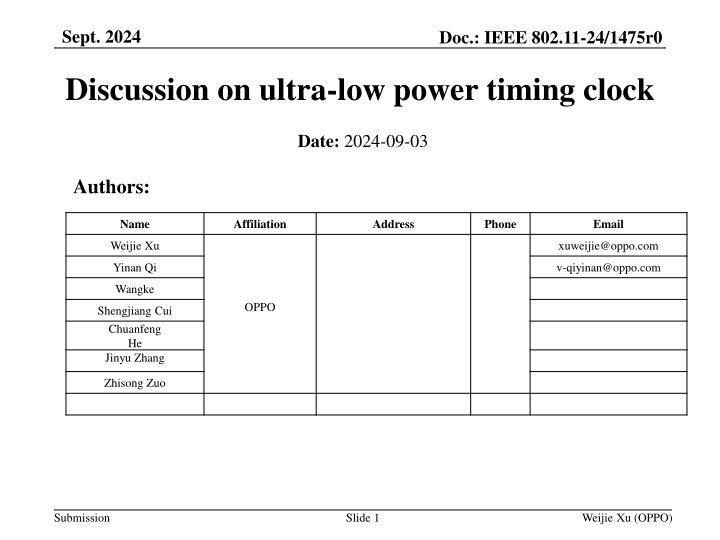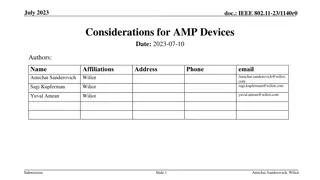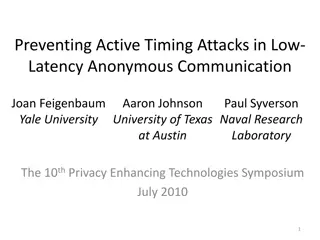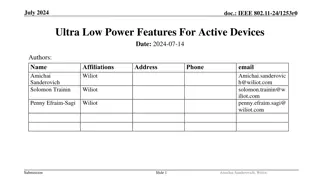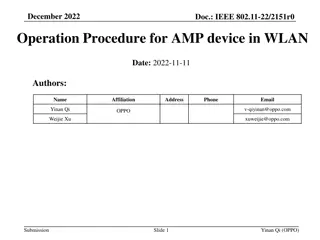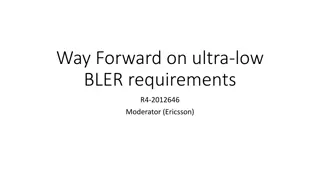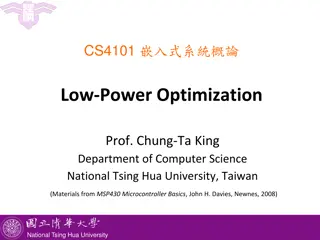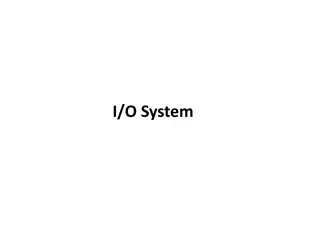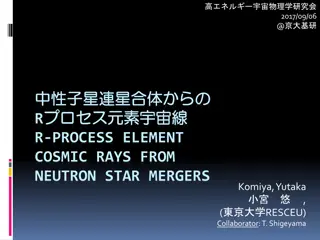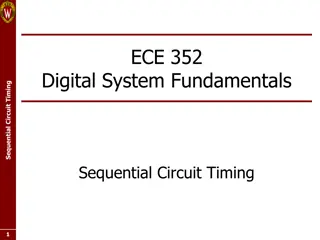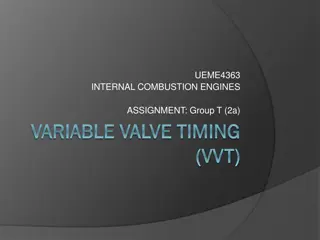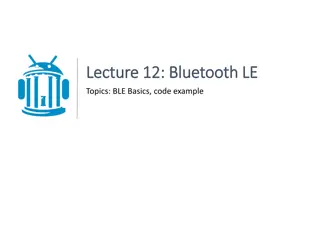Discussion on Ultra-Low Power Timing Clock in AMP Devices
This submission discusses the necessity and feasibility of implementing an ultra-low power timing clock in AMP devices, specifically focusing on AMP client STA capabilities and design considerations for Ambient IoT. It covers topics such as device capabilities, use cases, energy storage, receiver sensitivity, system efficiency, and operation procedures for AMP devices.
Download Presentation

Please find below an Image/Link to download the presentation.
The content on the website is provided AS IS for your information and personal use only. It may not be sold, licensed, or shared on other websites without obtaining consent from the author.If you encounter any issues during the download, it is possible that the publisher has removed the file from their server.
You are allowed to download the files provided on this website for personal or commercial use, subject to the condition that they are used lawfully. All files are the property of their respective owners.
The content on the website is provided AS IS for your information and personal use only. It may not be sold, licensed, or shared on other websites without obtaining consent from the author.
E N D
Presentation Transcript
Sept. 2024 Doc.: IEEE 802.11-24/1475r0 Discussion on ultra-low power timing clock Date: 2024-09-03 Authors: Name Affiliation Address Phone Email Weijie Xu xuweijie@oppo.com Yinan Qi v-qiyinan@oppo.com Wangke OPPO Shengjiang Cui Chuanfeng He Jinyu Zhang Zhisong Zuo Submission Slide 1 Weijie Xu (OPPO)
Doc.: IEEE 802.11-24/1475r0 Sept. 2024 Abstract In this submission, we firstly discuss the necessity of maintaining of timing clock by AMP device. Then we present the feasibility of implementing ultra-low power timing clock in AMP device(AMP STA). In the end, we propose the timing requirement. Submission Slide 2 Weijie Xu (OPPO)
Sept. 2024 Doc.: IEEE 802.11-24/1475r0 Background(1) In[1], device capabilities of AMP client STA have been discussed, and we propose the following: Use case Short/Medium range AMP IoT Close range AMP IoT Compatible AMP IoT (i.e. 11n compatible) ULTransmitter Active Tx Backscattering Backscattering Legacy OFDM Tx UL Amplifier Y(May) Y (Reflection) N Y(Legacy) DL Amplifier Y(May) Y(May) N Y(Legacy) Y(Opt 1) Y(Opt1) Y Y for wake-up RF ED Rx Sens. of ~-40dB (Zero-) IF Rx: sens. of ~-70dB Y(Opt 2) Y(Opt2) N OFDM receiver after wake-up Energy storage Y Y N Y IF Rx and UL:<10^3 ppm RF ED :10^4~10^5 ppm Clock accuracy 10^4~10^5 ppm <10^3 ppm for WUR ~20ppm for MR DL: MC-OOK UL:OOK as baseline, consider BPSK/MSK Waveform MC-OOK for wake-up, then OFDM Power consumption 100X W 100X W X W X mW~10X mW Submission Slide 3 Weijie Xu (OPPO)
Sept. 2024 Doc.: IEEE 802.11-24/1475r0 Background(2) In[1], on how to achieve the design target: AMP IoT should aim for the use cases that can t fully addressed by existing technologies, the following considerations are proposed to differentiate Ambient IoT with existing technologies (e.g., RFID): Potential longer range, via using - Advanced techniques such as reflection amplifier, spreading, UL coding etc. - Energy storage ( which help can lower energy harvesting threshold) - Other kinds of ambient power such as light, heat etc. - Higher sensitivity receiver (with different receiver Arch.) Potential higher system capacity/system efficiency - Techniques such as FDM/CDM Higher peak data rate? Lower deployment cost - Low-complexity AMP AP (e.g. by avoiding full-duplex operation) Enable more application, e.g. can link ambient IoT device with a smart phone - Submission Slide 4 Weijie Xu (OPPO)
Sept. 2024 Doc.: IEEE 802.11-24/1475r0 Background(3) In [2], the operation state and operation procedure of AMP device is discussed. One promising mode is as in below: Note that in this mode, AMP device can only perform Rx/Tx in duty-cycle, it is reasonable because: instant harvested power will be very limited thus it can t support always-on operation. However, there may scheduling delay due to lots of devices in queue. This will be different from RFID Energizing Signal RX/ TX RX/TX TX Ready Energy Level Leakage + Memory retention + Functionality Leakage Accumulation One or more RX/TX No response to Trigger No response to Trigger Submission Slide 5 Weijie Xu (OPPO)
Sept. 2024 Doc.: IEEE 802.11-24/1475r0 Background(4) In RFID, slot-aloha is used as the access procedure. RFID device is always on to monitor and decode the query signaling. It is feasible because of short working distance. The access timing is fully provided by the interrogator RFID device determines whether to access based on the its random number and the control of Query/QueryRep Figure: slot-Aloha in RFID[6] Submission Slide 6 Weijie Xu (OPPO)
Sept. 2024 Doc.: IEEE 802.11-24/1475r0 Discussion Based on previous slides, it can be seen that AMP device needs to maintain a timing clock during its operation procedure. Since, It is essential for power saving with duty-cycle operation, in order to store harvested power in case of longer operation distance It is essential to enable AMP IoT to work normally In sensor use case, the AMP device shall be able to report data periodically Besides duty-cycle operation, it can be expected there are also many other aspects, e.g., multiple access, scheduling timing etc., may require the AMP device to maintain a timing clock. The above requirements apply to both AMP device supporting active transmission and AMP device supporting backscattering. Therefore, we will further discuss the requirement of timing clock for AMP device. Submission Slide 7 Weijie Xu (OPPO)
Sep 2024 Doc.: IEEE 802.11-24/1475r0 Influence of the timing accuracy Relaxed clock accuracy is necessary. However, too low clock accuracy, e.g., 10^5 ppm will result in poor system performance. Example 1: influence on duty-cycle operation In duty-cycle operation, AMP device finds its operation time window based on its timing clock. Timing error results in earlier wake-up for signaling Rx. Trigger Trigger Trigger AMP AP Operation cycle AMP STA Sleep Rx Sleep Rx Rx Rx Assuming the operation cycle is 100ms, 10^5 ppm means there will be a drifting of 10ms every 100ms, it requires increased Rx of more than 10ms Example 2:influence on multiple access Trigger AMP AP If device can maintain a timing clock, it will ease TDM and improve the system efficiency. However, poor timing accuracy results in mutual-interference TDMed transmissions (from different devices) T_RU1 T_RU2 among T_RU2 T_RU1 AMP STAs Submission Slide 8 Weijie Xu (OPPO)
Sept. 2024 Doc.: IEEE 802.11-24/1475r0 Proposed requirements for timing Relaxed clock accuracy is necessary (to reduce the complexity and power consumption) and feasible. However, considering the issues of poor timing accuracy, there shall be a proper compromise. In [1], the following requirements are proposed. In above table, it give the initial clock requirements(i.e. initial SFO) during Rx and Tx. For timing, we further propose a requirement of timing clock accuracy: 10^3 ppm~10^4 ppm for AMP device supporting active transmission or long range backscattering. For close range AMP IoT, it seems fine to reuse RFID requirement since it is peer-to-peer communication Submission Slide 9 Weijie Xu (OPPO)
Sept. 2024 Doc.: IEEE 802.11-24/1475r0 Feasibility analysis For AMP device, the key factors need to be considered in order to support a timing clock are its complexity and power consumption Based on our investigation[3][4][5], with not so much increase of device complexity, ultra-low power RTC clock of 10^3ppm~ 10^4ppm (table bottom-right) is achievable. Power consumption of clock circuit can be as low as several Nano-Walt The RTC clock can be crystal or crystal-less(i.e. silicon-based) Temperature variation is the main challenge for the circuit. It may has temperature compensation (Figure: Bottom-left). Submission Slide 10 Weijie Xu (OPPO)
Sept. 2024 Doc.: IEEE 802.11-24/1475r0 Summary and proposal In this submission, we discuss the necessity, feasibility and requirement of having a timing clock for AMP device . We have the following proposal: Propose to a requirement of timing clock accuracy: 10^3 ppm~10^4 ppm for AMP device supporting active transmission or long range backscattering Submission Slide 11 Weijie Xu (OPPO)
Sept. 2024 Doc.: IEEE 802.11-24/1475r0 Reference 1. IEEE 802.11-24/0853r0 Design target and device capabilities for AMP IoT 2. IEEE 802.11-24/0826r0, Energy balance of the state-based AMP station 3. D. Yoon, T. Jang, D. Sylvester and D. Blaauw, "A 5.58 nW Crystal Oscillator Using Pulsed Driver for Real-Time Clocks," in IEEE Journal of Solid-State Circuits, vol. 51, no. 2, pp. 509-522, Feb. 2016, doi: 10.1109/JSSC.2015.2501982. 4. Y. Lee, B. Giridhar, Z. Foo, D. Sylvester and D. Blaauw, "A 660pW multi-stage temperature-compensated timer for ultra-low-power wireless sensor node synchronization," 2011 IEEE International Solid-State Circuits Conference, San Francisco, CA, USA, 2011, pp. 46-48, doi: 10.1109/ISSCC.2011.5746213. 5. Y. Lin et al., "A 150pW Program-and-Hold Timer for Ultra-Low-Power Sensor Platforms", ISSCC Dig. Tech. Papers, pp. 326-327, Feb. 2009 6. RFID_gs1-epc-gen2v2-uhf-airinterface Submission Slide 12 Weijie Xu (OPPO)
